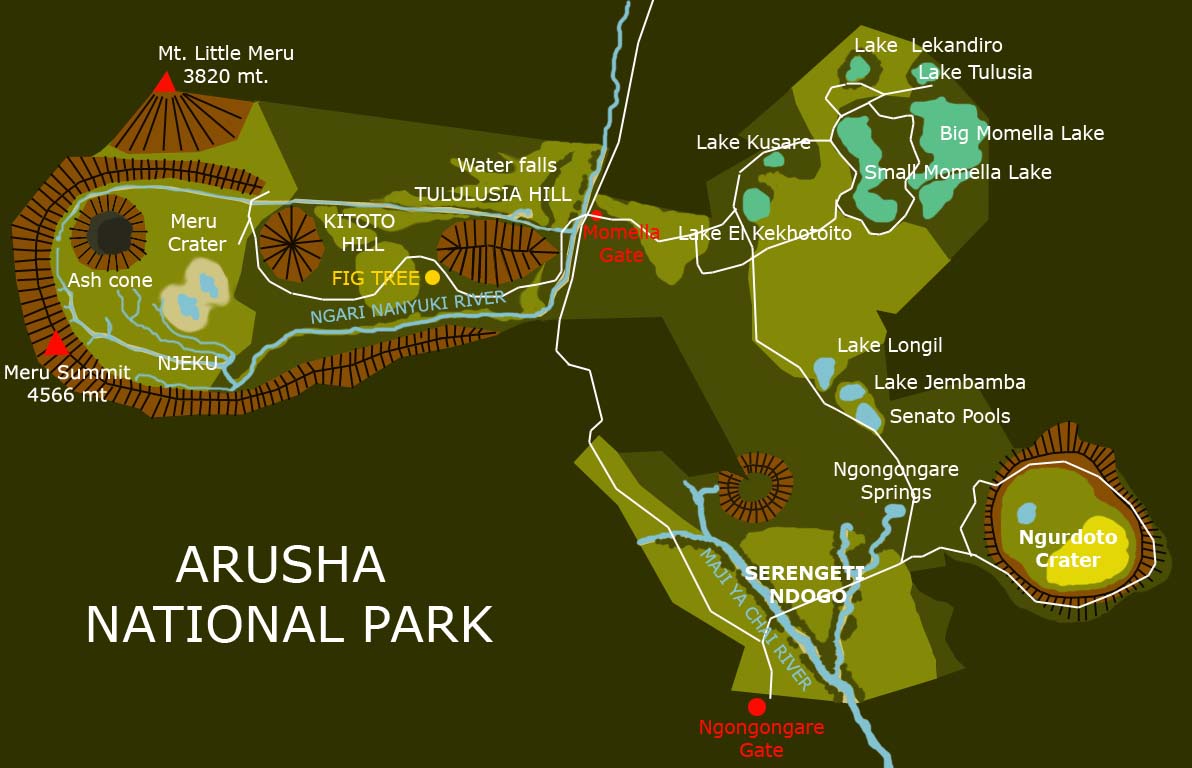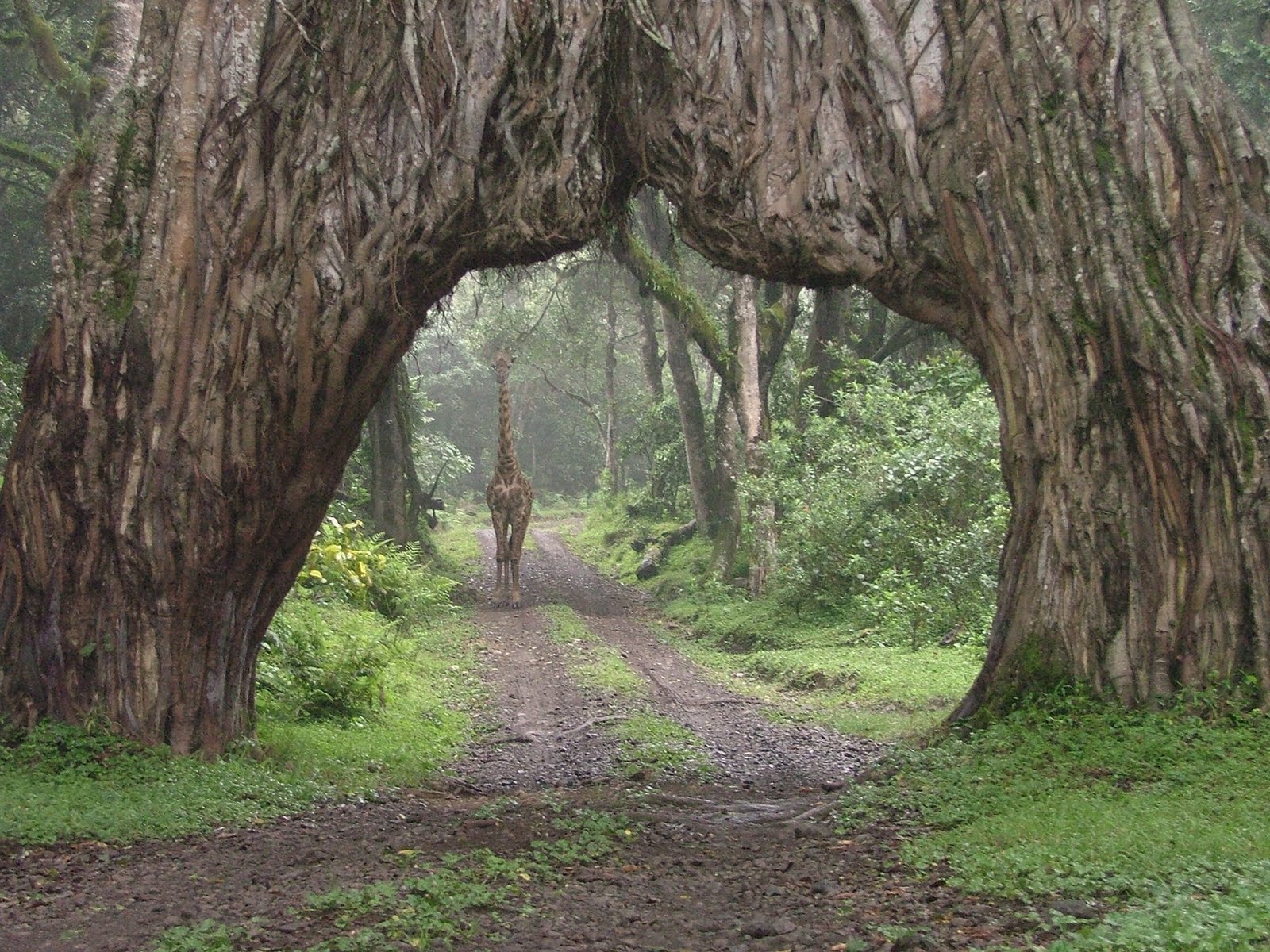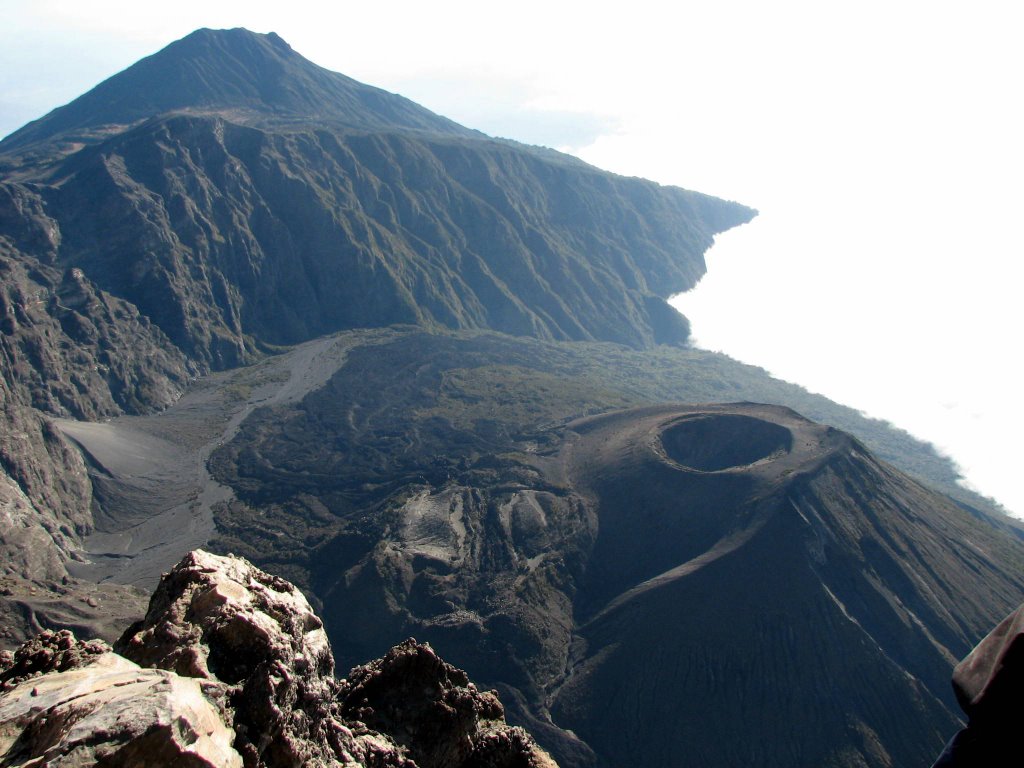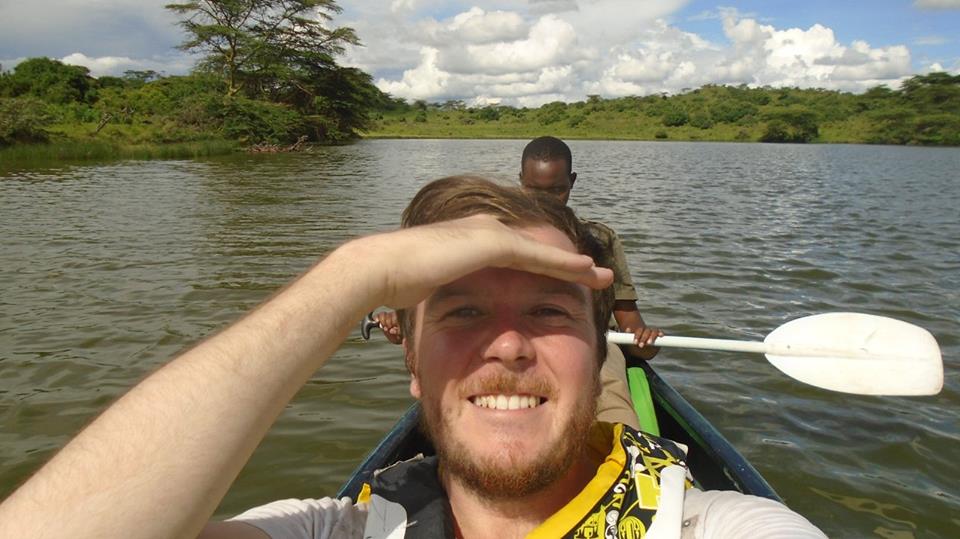

About Arusha N. Park – Size:552 km² / 212 mi² – Altitude: 1340-1839 m / 4396-6033 ft
Though very accessible, Arusha NP isn’t on many safari itineraries. This is mainly because it doesn’t offer a chance of seeing the Big Five. The park is at the base of Mount Meru, which is good for climbing. It has a range of habitats including forest – home to black-and-white colobus monkeys – and is excellent for birding.
The closest National Park to Arusha town – northern Tanzania’s safari capital – Arusha National Park is a multi-faceted jewel, often overlooked by safari goers, despite offering the opportunity to explore a beguiling diversity of habitats within a few hours. The entrance gate leads into shadowy mountain forest inhabited by inquisitive blue monkeys and colorful Turacos and Trogons – the only place on the northern safari circuit where the acrobatic black-and-white colobus monkey is easily seen. In the midst of the forest stands the spectacular Ngurdoto Crater, whose steep, rocky cliffs enclose a wide marshy floor dotted with herds of buffalo and warthog.

Further north, rolling grassy hills enclose the tranquil beauty of the Momela Lakes, each one a different hue of green or blue. Their shallows sometimes tinged pink with thousands of flamingos, the lakes support a rich selection of resident and migrant waterfowl, and shaggy Waterbucks display their large lyre-shaped horns on the watery fringes. Giraffes glide across the grassy hills, between grazing zebra herds, while pairs of wide-eyed dik dik dart into scrubby bush like overgrown hares on spindly legs.
Although elephants are uncommon in Arusha National Park and lions absent altogether, leopards and spotted hyenas may be seen slinking around in the early morning and late afternoon. It is also at dusk and dawn that the veil of cloud on the eastern horizon is most likely to clear, revealing the majestic snow-capped peaks of Kilimanjaro, only 50km (30 miles) distant.
 But it is Kilimanjaro unassuming cousin, Mount Meru – the fifth highest in Africa at 4,566 meters (14,990 feet) – that dominates the park’s horizon. Its peaks and eastern foot slopes protected within the National Park, Meru offers unparalleled views of its famous neighbor, while also forming a
But it is Kilimanjaro unassuming cousin, Mount Meru – the fifth highest in Africa at 4,566 meters (14,990 feet) – that dominates the park’s horizon. Its peaks and eastern foot slopes protected within the National Park, Meru offers unparalleled views of its famous neighbor, while also forming a
rewarding hiking destination in its own right.
Passing first through wooded Savannah where buffalo and giraffes are frequently encountered, the ascent of Meru leads into forests aflame with red-hot pokers and dripping with Spanish moss, before reaching high open heath spiked with giant Lobelias. Everlasting flowers cling to the alpine desert, as delicately-hoofed Klipspringers.

Pros and Cons
Very scenic with different habitats, including forest
Views of Mount Kilimanjaro
Excellent birding with about 400 species, including forest birds
Close to Arusha and accessible for a day trip
Canoeing safari is offered
Off the beaten track and not crowded
Most of the major safari animals aren’t present or aren’t easily seen
Wildlife
Game viewing in Arusha NP is more low-key than in the other parks in Northern Tanzania. Animals that are easily seen include buffalo, giraffe and several antelope species. More exciting are the black-and-white colobus monkeys that live in the forest, and the large number of bird species. Several lakes often host flocks of flamingos.
Scenery
The park’s appeal is mainly its scenery. The habitat diversity spans from montane rainforest to moist savannah to alpine moorland. The most prominent landmark is Mount Meru. Other highlights are a massive extinct volcano and several scenic lakes, with Mount Kilimanjaro in the background on a clear day.









